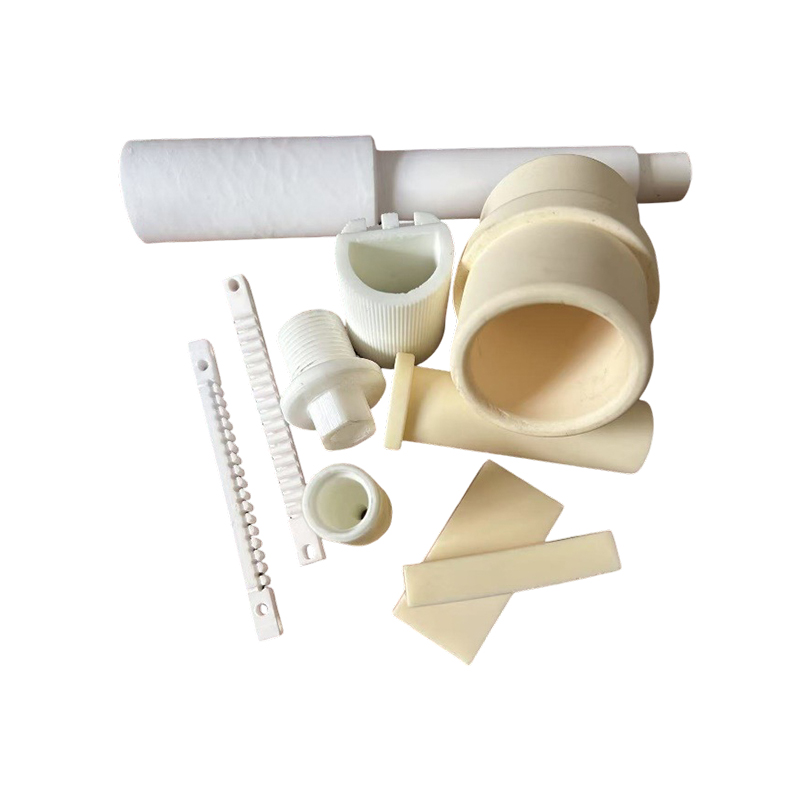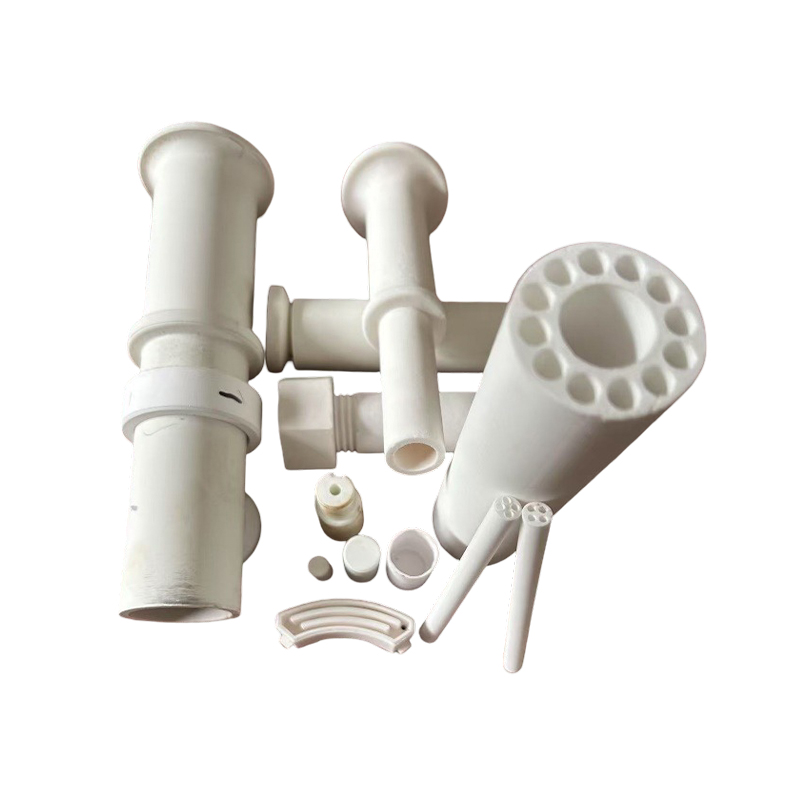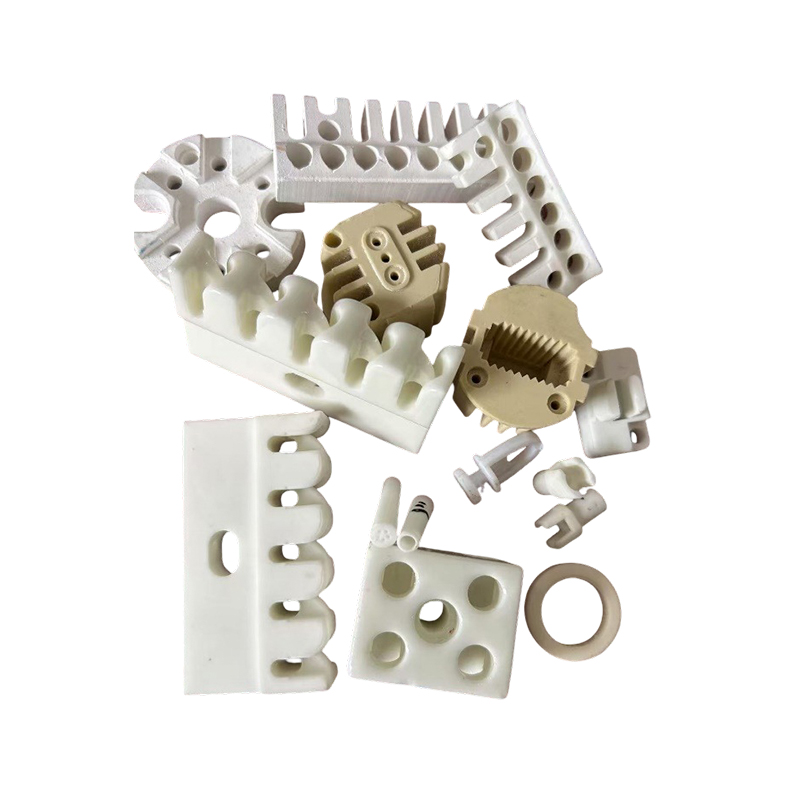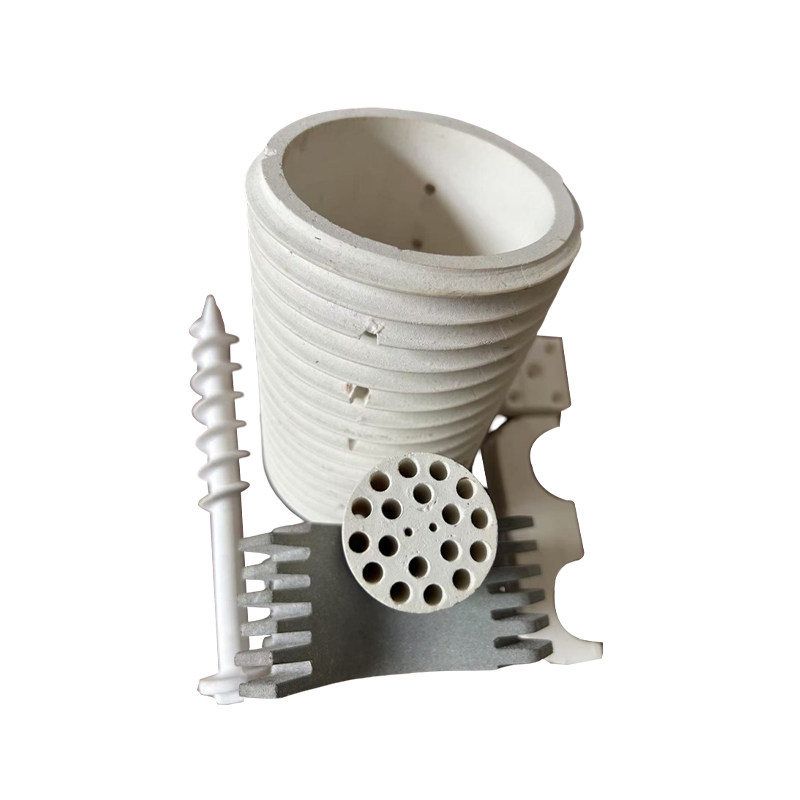Are alumina ceramics an ideal material for high-voltage insulators, power equipment supports, and mechanical seals?
Release Time : 2025-10-04
In modern industry and power systems, material selection directly determines equipment reliability, safety, and service life. Traditional metals or polymers often struggle to meet the demands of long-term stable operation, especially in extreme environments such as high voltage, high temperature, severe corrosion, or high wear. Alumina ceramics, particularly high-purity 92% and 95% alumina ceramics, have become the material of choice for many key components due to their superior overall performance. Their exceptional compressive properties are particularly prominent, making them an irreplaceable advantage in applications requiring extremely high structural strength and stability, such as high-voltage insulators, power equipment supports, and mechanical seals.
Alumina ceramics' compressive resistance stems from their dense crystal structure and strong ionic bonding. During the high-temperature sintering process, the alumina particles are fully densified, forming a rigid, nearly pore-free structure that can withstand extreme external pressure without plastic deformation or cracking. This high compressive strength not only means the material itself is resistant to crushing, but also demonstrates its dimensional stability and fatigue resistance under long-term loads. In power systems, high-voltage insulators must not only provide excellent electrical insulation but also support heavy components such as conductors and disconnectors, withstanding multiple mechanical stresses such as wind loads, ice and snow, and vibration. Alumina ceramics, with their high strength and rigidity, maintain structural integrity under long-term loads, preventing insulators from breaking or collapsing due to mechanical failure, thereby ensuring the safe operation of transmission lines.
Inside power equipment, support components and insulation structures also face complex mechanical environments. For example, in circuit breakers, transformers, and gas-insulated switchgear (GIS), ceramic components are often used to secure conductive components or isolate high-voltage circuits. These components not only bear their own weight but also withstand electromagnetic shock and stress changes caused by thermal expansion and contraction during operation. The high compressive strength of alumina ceramics enables them to remain stable under these dynamic loads, preventing uneven electric field distribution or poor contact due to minor deformation, thereby improving the overall reliability and insulation margin of the equipment.
In the field of mechanical seals, alumina ceramics also benefit from their excellent pressure and wear resistance. Mechanical seals are widely used in rotating equipment such as pumps, compressors, and reactors to prevent fluid leakage. During operation, the sealing surface is subjected to the combined forces of medium pressure, spring preload, and rotating friction, making it highly susceptible to wear and cracking. Alumina ceramics, with their high hardness and low coefficient of friction, effectively resist wear. Their high compressive strength ensures that the seal rings remain in place even under high-pressure conditions, preventing deformation and cracking. Even in media containing particulate matter, ceramic seals maintain a long service life, reducing maintenance downtime.
Furthermore, alumina ceramics' compressive strength is complemented by their excellent electrical insulation, high-temperature resistance, and chemical stability. In high-voltage insulators, the material must not only withstand mechanical stress but also maintain insulation properties under high voltages. Alumina ceramics excel in both aspects, resisting breakdown due to electric field concentration or partial discharge. Their structural strength remains unchanged even in high-temperature environments, making them suitable for high-temperature equipment such as electric furnaces and heating elements. The ceramic surface remains stable and resistant to corrosion in acidic, alkaline, and oxidizing environments, ensuring consistent performance over long-term use.
It is this synergistic advantage of multiple properties that enables alumina ceramics to transcend the limitations of single-function materials, becoming a multifunctional engineering material that combines structural support, electrical insulation, corrosion resistance, and wear resistance. This not only improves equipment safety and durability, but also reduces maintenance costs and the risk of failure. In modern industrial systems, which demand high reliability, long life, and high performance, alumina ceramics, with their superior compressive strength, have become the ideal choice for key components such as high-voltage insulators, power support components, and mechanical seals, silently supporting the stable operation of modern energy, manufacturing, and technological systems.
Alumina ceramics' compressive resistance stems from their dense crystal structure and strong ionic bonding. During the high-temperature sintering process, the alumina particles are fully densified, forming a rigid, nearly pore-free structure that can withstand extreme external pressure without plastic deformation or cracking. This high compressive strength not only means the material itself is resistant to crushing, but also demonstrates its dimensional stability and fatigue resistance under long-term loads. In power systems, high-voltage insulators must not only provide excellent electrical insulation but also support heavy components such as conductors and disconnectors, withstanding multiple mechanical stresses such as wind loads, ice and snow, and vibration. Alumina ceramics, with their high strength and rigidity, maintain structural integrity under long-term loads, preventing insulators from breaking or collapsing due to mechanical failure, thereby ensuring the safe operation of transmission lines.
Inside power equipment, support components and insulation structures also face complex mechanical environments. For example, in circuit breakers, transformers, and gas-insulated switchgear (GIS), ceramic components are often used to secure conductive components or isolate high-voltage circuits. These components not only bear their own weight but also withstand electromagnetic shock and stress changes caused by thermal expansion and contraction during operation. The high compressive strength of alumina ceramics enables them to remain stable under these dynamic loads, preventing uneven electric field distribution or poor contact due to minor deformation, thereby improving the overall reliability and insulation margin of the equipment.
In the field of mechanical seals, alumina ceramics also benefit from their excellent pressure and wear resistance. Mechanical seals are widely used in rotating equipment such as pumps, compressors, and reactors to prevent fluid leakage. During operation, the sealing surface is subjected to the combined forces of medium pressure, spring preload, and rotating friction, making it highly susceptible to wear and cracking. Alumina ceramics, with their high hardness and low coefficient of friction, effectively resist wear. Their high compressive strength ensures that the seal rings remain in place even under high-pressure conditions, preventing deformation and cracking. Even in media containing particulate matter, ceramic seals maintain a long service life, reducing maintenance downtime.
Furthermore, alumina ceramics' compressive strength is complemented by their excellent electrical insulation, high-temperature resistance, and chemical stability. In high-voltage insulators, the material must not only withstand mechanical stress but also maintain insulation properties under high voltages. Alumina ceramics excel in both aspects, resisting breakdown due to electric field concentration or partial discharge. Their structural strength remains unchanged even in high-temperature environments, making them suitable for high-temperature equipment such as electric furnaces and heating elements. The ceramic surface remains stable and resistant to corrosion in acidic, alkaline, and oxidizing environments, ensuring consistent performance over long-term use.
It is this synergistic advantage of multiple properties that enables alumina ceramics to transcend the limitations of single-function materials, becoming a multifunctional engineering material that combines structural support, electrical insulation, corrosion resistance, and wear resistance. This not only improves equipment safety and durability, but also reduces maintenance costs and the risk of failure. In modern industrial systems, which demand high reliability, long life, and high performance, alumina ceramics, with their superior compressive strength, have become the ideal choice for key components such as high-voltage insulators, power support components, and mechanical seals, silently supporting the stable operation of modern energy, manufacturing, and technological systems.







